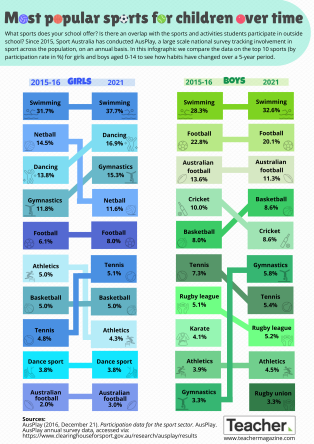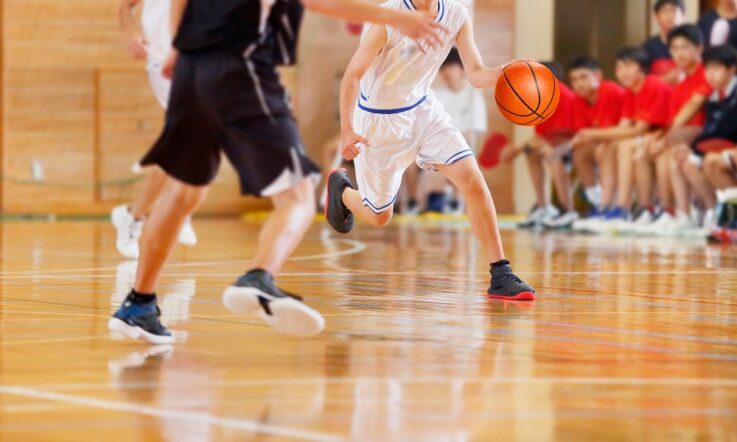Do you incorporate physical activity into your teaching? A new study from researchers at Queensland University of Technology looks at the ways teachers use physical activity in their own lessons, and why they do it.
The report authors – Adjunct Professor Linda Gilmore, Professor Karen Sullivan, and psychologist Brenda Hughes – share their findings in the Australian Journal of Education paper ‘Incorporating physical activities in teaching practice’.
What did the study involve?
The researchers surveyed 222 teachers – the majority were working in primary school (100) and secondary school settings (91), with some early childhood educators (17) and teachers from other education settings (14) also surveyed.
Respondents were asked 3 questions:
- Do you incorporate physical activity for students in your teaching practice?
- [If yes] Please give us some examples of the ways in which you do this.
- Why do you incorporate physical activity in your teaching practice?
What did the research find?
Over 70% of teachers reported incorporating physical activity into their teaching practice.
Early childhood and primary school teachers were most likely report using physical activities (88% and 86%, respectively) compared to just over half (54%) of secondary school teachers.
There were 3 broad ways in which teachers incorporated this physical activity into their teaching practice.
Movement breaks: The majority of teachers (108 of the 160 that reported using physical activity) said they use ‘movement breaks’ in their teaching. These could be preplanned and scheduled, or spontaneously included whenever the teacher felt they were needed. Activities ranged from simple stretches or exercises like star jumps, to longer and/or more complex activities such as having students play balancing games.
Regular organised activities: Roughly one-quarter (44 teachers) responded that they regularly organised planned physical activities for their students. These could be during class, or outside of it, such as at the beginning of the day or during breaks. Responses ranged from having students exercise (through activities like running laps before class each morning) to yoga and meditation, to simply putting time aside to ‘play games and have a giggle’.
Activities integrated with academic content: A smaller number of teachers (25) said that they include physical activity into their academic content. This involves teachers making some form of physical activity part of the learning or lessons themselves. Examples include using jumping to teach measurement, running bases (like you would in baseball) when answering correctly in quizzes, or even just throwing a ball while revising math facts.
Why are teaching incorporating physical activity?
The general understanding among survey participants was that students have a basic need to move. The researchers say this was particularly true for teachers of younger students and, as a result, incorporating physical activity into teaching seems to be more common in early childhood and primary schools than in secondary schools.
It’s also clear from the study that many teachers feel it has benefits to learning – whether directly or indirectly.
Of the 160 teachers who said they incorporated physical activity into their practice, 71 said the benefits included student attention, concentration, and engagement, while 30 felt it worked to refresh, refocus, relax, recharge or reboot students.
Some teachers also reported that physical activity was beneficial in getting students ready to learn, describing it as helpful for ‘warming up’, ‘stimulating’, ‘kickstarting’, ‘firing up’, ‘priming’ and ‘activating’ student brains (references to the brain were mentioned by 27 teachers).
What next for the research?
The authors highlight the fact that despite the perceived benefit of physical activity on learning, research on the topic is currently sparse and the evidence less clear.
They note that none of the teachers in the survey mentioned any research which they based their physical activities on, nor did they mention any attempts to evaluate their use of physical activity in the classroom (for example, whether it improved spelling test results). Although, they add that these responses were not explicitly prompted.
The authors say further research that supports teachers in evaluating the efficacy of these practices may be a starting point for better evaluating the effectiveness of physical activity on learning.
To read more about the study findings, including further discussion points, you can access the full open-access article published in the Australian Journal of Education, here.
References
Gilmore, L., Sullivan, K. A., & Hughes, B. (2024). Incorporating physical activities in teaching practice. Australian Journal of Education. https://doi.org/10.1177/00049441241244553
Do you incorporate physical activity into your teaching? How does it help your students?
The report’s authors note that none of the teachers surveyed mentioned any research that supported their practices. Do you use evidence and research to support your teaching practice?
Additionally, none of the teachers mentioned evaluating if the physical activities they implemented had any benefit for their students – such as improving spelling.
How often do you review and measure the effectiveness of activities and practices you incorporate into your teaching?



